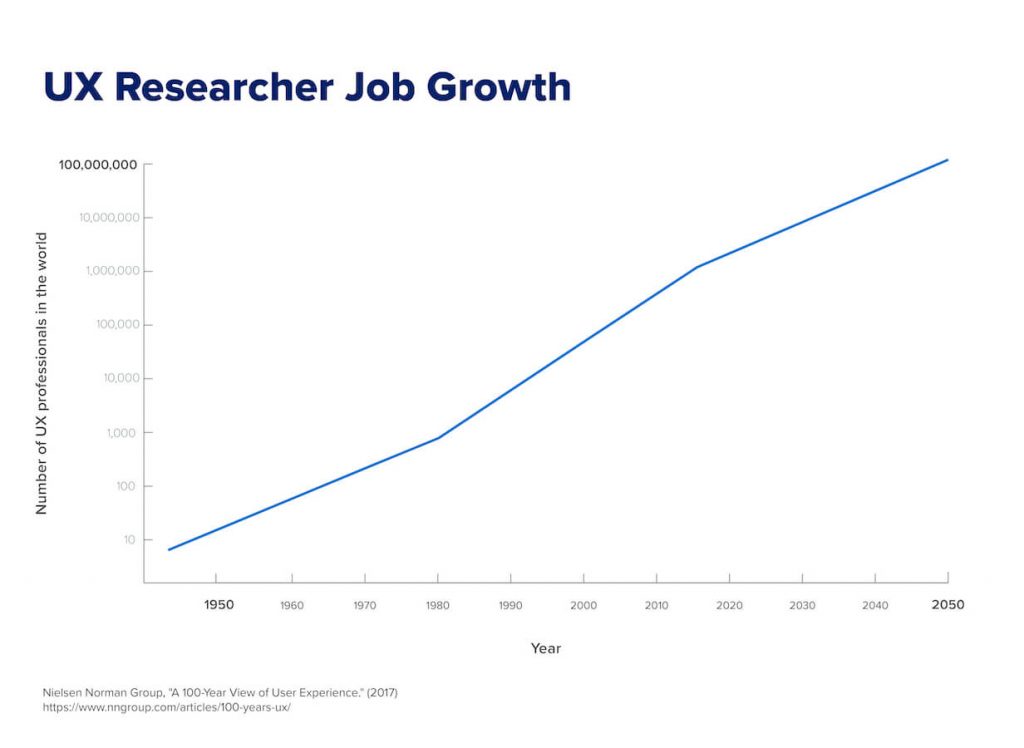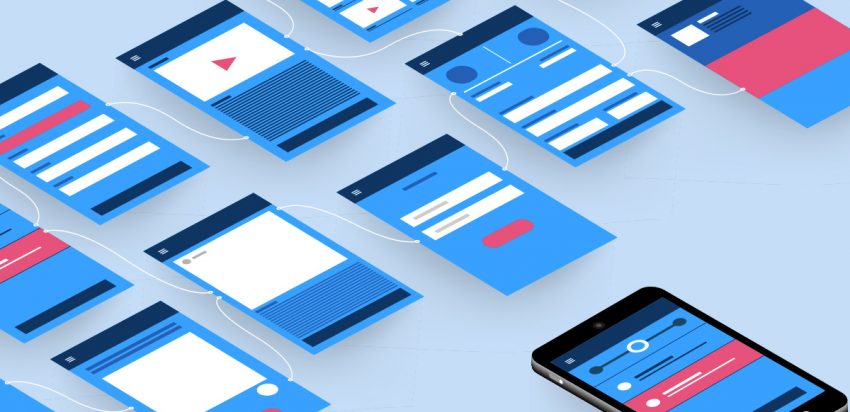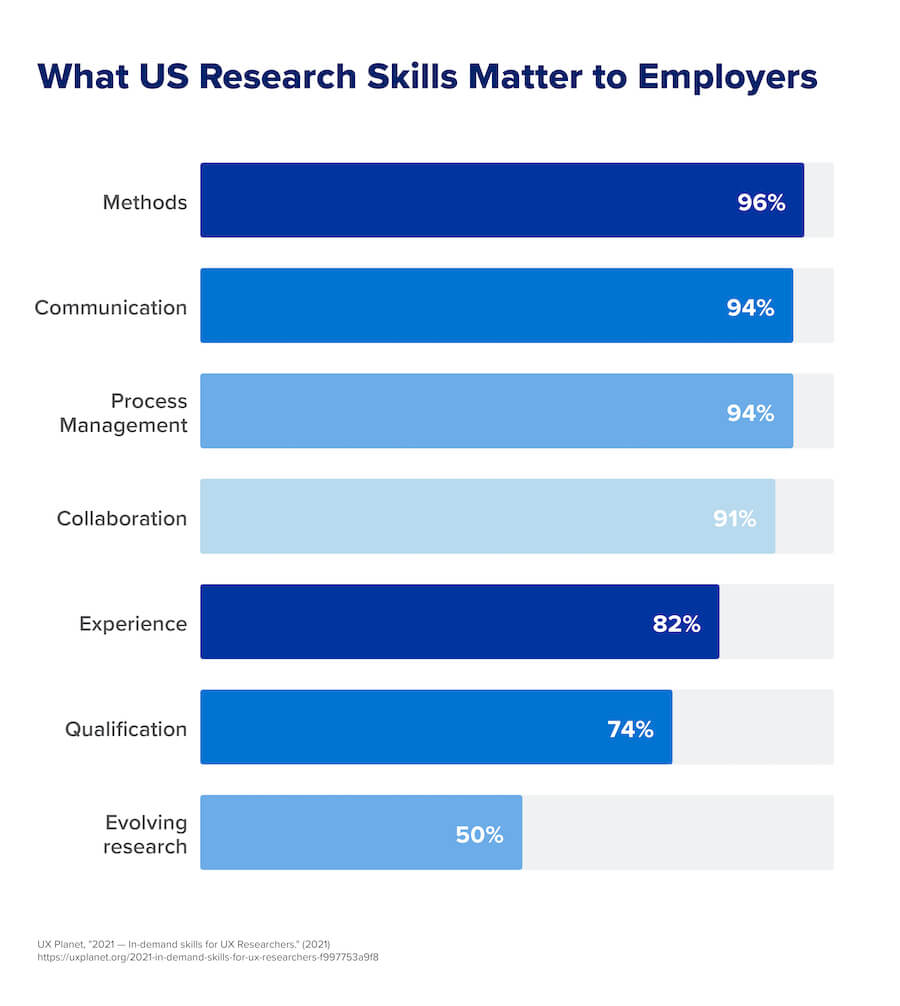Frequently Asked Questions About UX Research
Here are some frequently asked questions from people who are interested in how to become a UX researcher:
How can you get started with UX research?
Some of the most common ways to get started in UX research include traditional degrees and UX bootcamps. The best option for you depends on your current lifestyle and life stage, including how much time you feel you can commit to educational activities each week and your desired timeline to complete your education. Traditional degrees can take a few years depending on how many classes you take at once. A UX bootcamp, on the other hand, generally takes around 12-24 weeks to complete.
Are UX researchers in demand?
Market research analysts are in high demand, which in turn creates an equally high demand for those with vast UX research skills. In fact, according to a 100-year view of UX by the Nielsen Norman Group, the profession is projected to grow from the current 1 million people worldwide to about 100 million people by 2050.

Is UX research a good career?
UX research is a great field for people interested in technology and design. UX designers work on solving interesting challenges and their work has a major impact on the success seen by a business’s products. UX researchers are usually very satisfied with their careers and tend to stay in the field.
How much do UX researchers make?
According to the U.S. Bureau of Labor Statistics, the 2020 median pay for people in the market research analyst industry (which includes the UX research profession) was $65,810 per year — which is significantly higher than the median annual wage in the U.S. The highest 10 percent of these professionals earned over $127,410 dollars per year. The Nielsen Norman Group found that entry-level salaries for UX professionals averaged about $67K in 2019, with a $6K/year experience premium during the first 5 years of their career.
Should you become a UX researcher/designer?
Working in either UX research or design can be a great path for anyone looking for a fulfilling career, but choosing one over the other will largely depend on your personal preferences and professional aspirations. Generally speaking, UX researchers will spend much of their time researching and analyzing user demand and behavior, leveraging these findings to inform a stronger usability design process. Designers, on the other hand, oversee the actual creation of a digital entity’s user interface, tapping into key research data to produce an experience that is navigable, easy to interpret, and ultimately in line with a user’s goals and expectations. Aspiring professionals in both fields should be prepared to bring a blend of empathy, critical thinking, and organization to their daily responsibilities.
Do you need a master’s for UX research?
Having a master’s degree can help some people get started in UX research — especially if the degree is in social or behavioral science that focuses on behavioral research design. However, a master’s degree is not required for people wanting to work in UX research.
Can you get a UX job with no experience?
Having some experience in UX research can help you land a job in an applicable field. However, there are paths for people to start in other ways. Some UX researchers start as freelancers and use those projects for their portfolio. It’s also possible to start doing UX-related tasks at your current organization and build up a skillset to transfer departments. Having some hands-on experience can help you build UX researcher skills and command a higher salary.
Is it hard to get a UX research job?
UX research is a growing field where employers value transferable skills, but people of all experience levels can theoretically pursue a job in the field. Those looking to enter the field with no prior experience, for instance, can attend a UX bootcamp to study at a flexible pace via practical instruction.

 Live Chat
Live Chat

